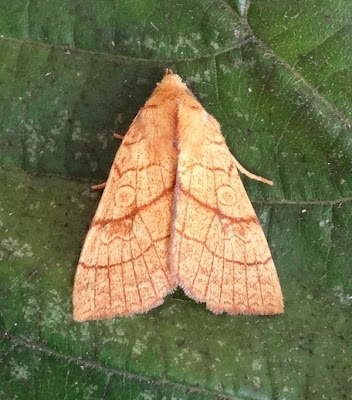
At least one wheatear has been present at the park on or near the seawall over the last few days. The hot weather seems to have kept many other migrants away or maybe passing us by on their long journeys south.
A grey wagtail flew over the car park early on Wednesday 4th while in the fields, 25 yellow wagtails were still around the feet of the cows. A willow warbler called from bushes near the pond.
The flock of little egrets still catches the eye with a new record of 55 birds seen on or by the pools in the grazing fields. Fifty egrets were standing by the water with the other five in the nearby trees.
At least twenty appeared to spend the night in these trees on Tuesday night after 51 had been counted in the middle of the day. No egrets spent Wednesday night in the trees despite at least 20 birds passing over and checking the area out.
Not so many waders on the pools on Wednesday morning with 50 redshank, 20 black-tailed godwit and a couple of snipe noted. There were higher numbers on Monday with 150 redshank and 70 black-tailed godwits and five snipe, along with 200 teal and 3 wigeon. The first returning gadwall was noted on the park pond on Wednesday.
A sparrowhawk flew across the car park on Wednesday morning and a little owl perched up beside the car park on Tuesday evening.
Present in the grazing fields on Monday were 30 goldfinches amongst the thistles and also 5 skylarks.
Considering how busy the park has been this summer, the park's black rabbit has done well to survive since it was first spotted in the spring. Although warier than it used to be, it is probably a domestic rabbit that has been left near the car park to fend for itself.
Various dragonflies have been seen around the park during this recent warm spell such as this pair of mating ruddy darters. Also seen were several migrant hawkers and common darters.
The distinctive elephant-like trunk on this large caterpillar led to this moth being called the elephant hawkmoth. This one was one of several seen feeding in a fuchsia bush in Woodfield Drive in West Mersea. It was a good season for the adult moths on the wing during mid-June to early August and this caterpillar will be the result of one of those females laying eggs during that period.
The large thorn moth was the main moth of note in the trap after Tuesday night's mothing session. It used to be a scarce moth in the county but there seems to have been more records in recent years. This is the third year it has been noted here.
The orange sallow is usually noted each autumn here in ones or twos. Although it belongs to the sallow family, the larvae feed on lime, of which there are several at the park including a lime tree above the moth trap.
The pinkish smudges on the wings of this moth have given rise to this being named the maiden's blush. A common moth, this individual is the second generation on the wing this year.
It had been a relatively warm night for trapping although there had been a clear sky. Around 150 moths of 30 species were noted with the commonest moths being the flounced rustic, square-spot rustic and a good emergence of about 40+ light emerald moths.








No comments:
Post a Comment